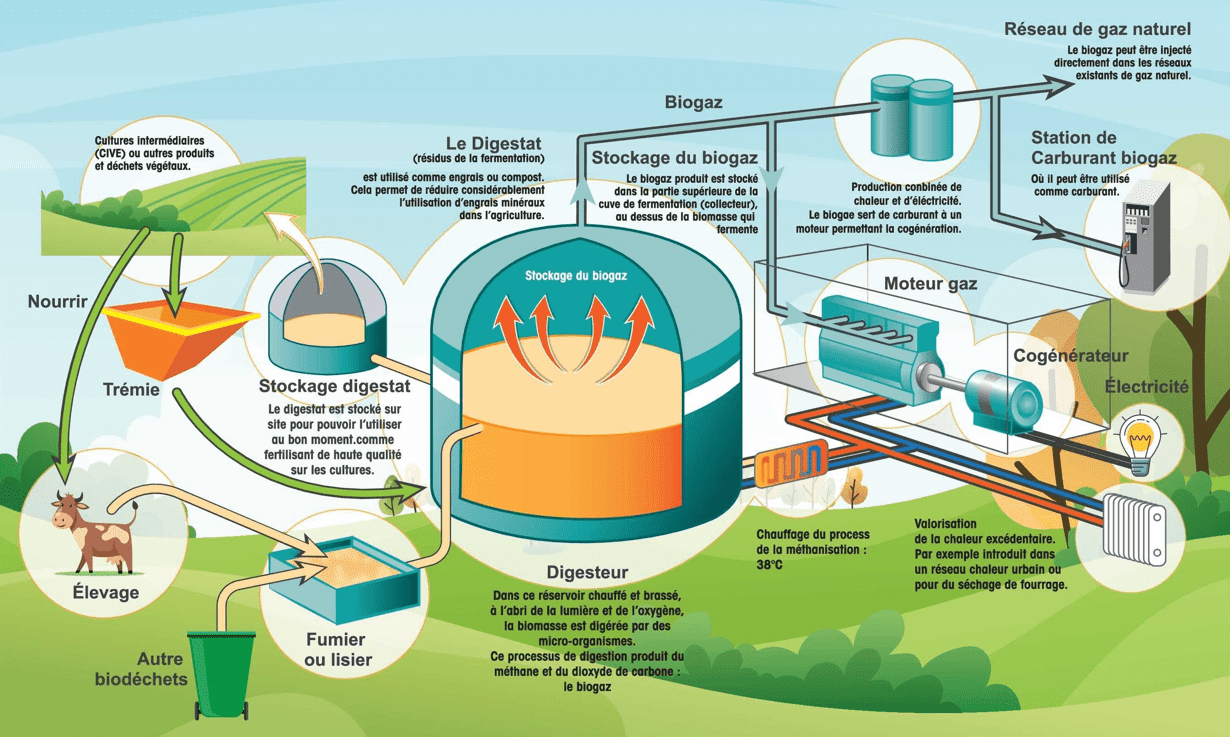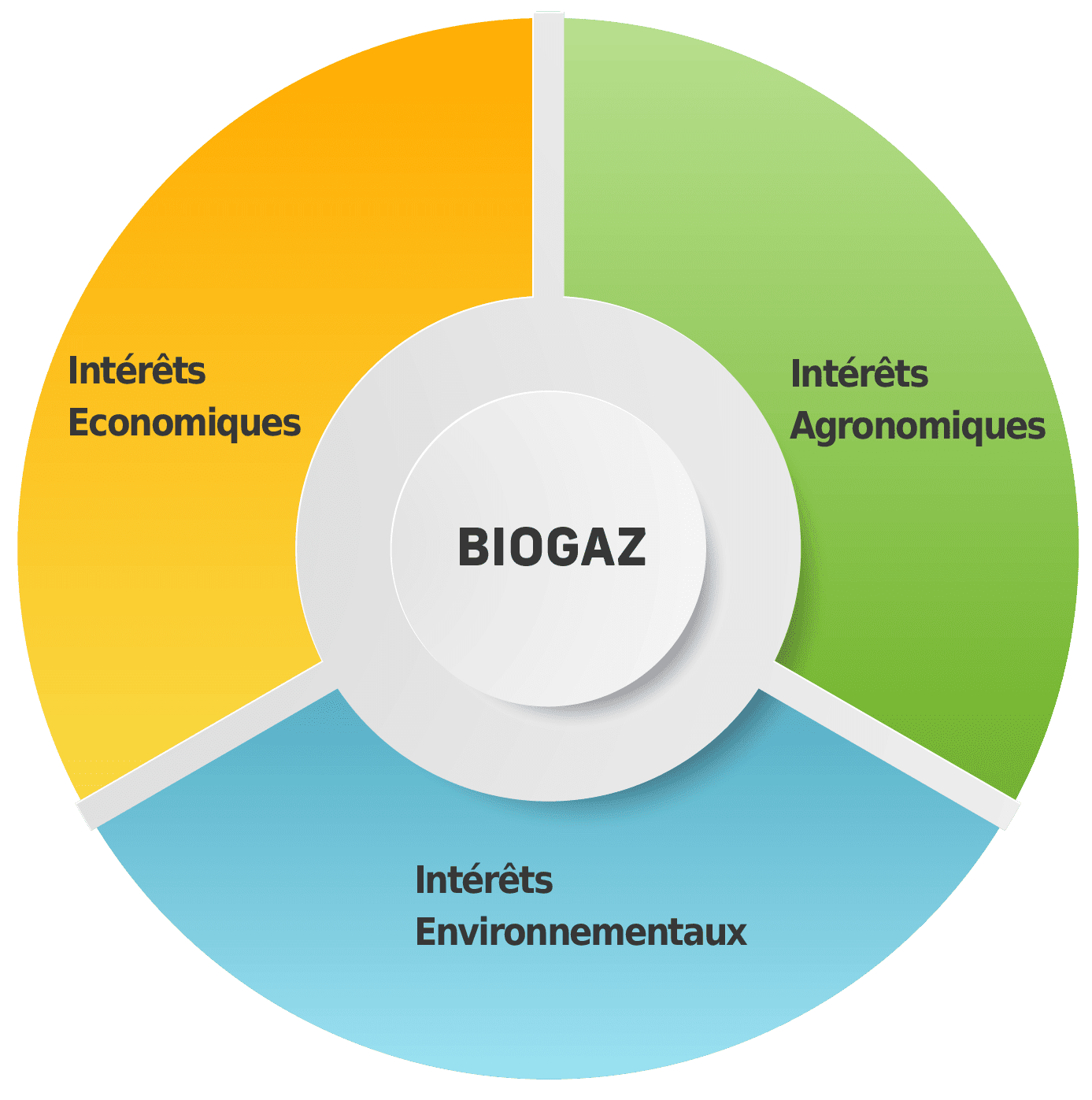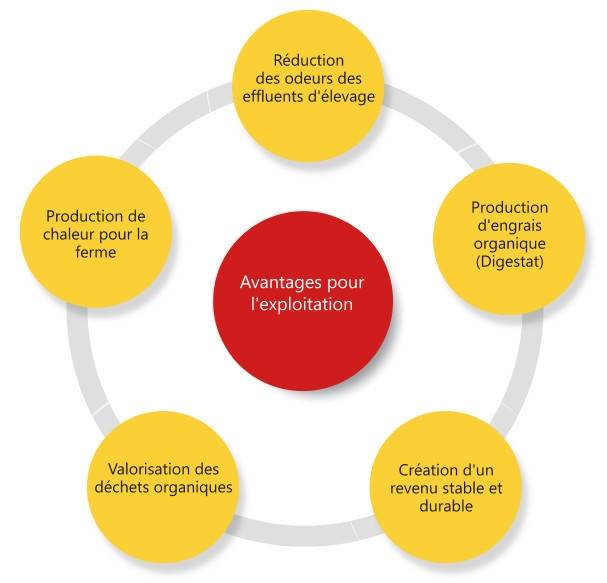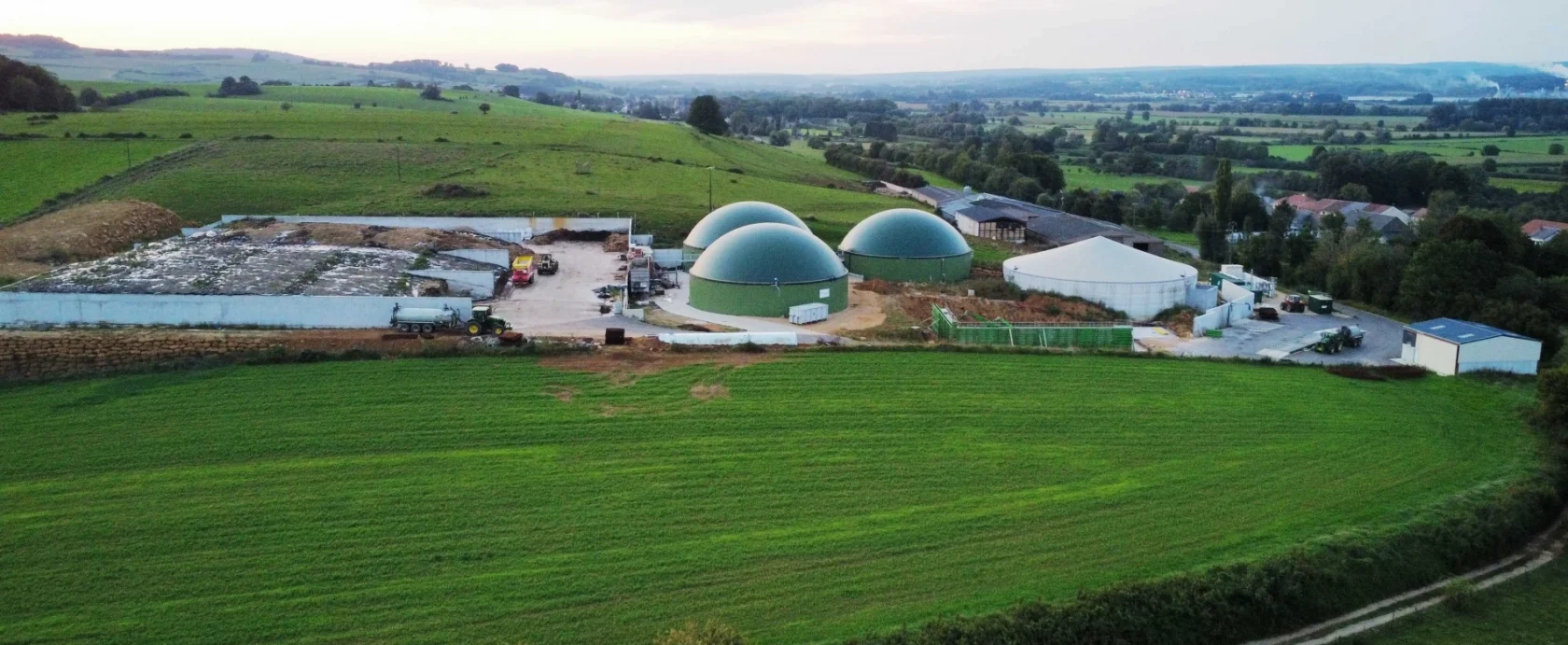Biogas industry : economic interests + agronomic interests + environmental interests!
Recycle waste, produce renewable energy, improve air and soil quality, produce a natural fertilizer, promote the maintenance of French agriculture, offer an ecological alternative to traditional fuels (Bio NGV).
Biogas Plant Operation
Biogas production is a natural process of recycling fermentable organic matter, in an oxygen-free environment, due to the action of numerous micro-organisms that transform the organic matter into biogas and digestate. This transformation can be broken down into 4 main stages: hydrolysis, acidogenesis, acetogenesis and methanogenesis. It takes place naturally in certain environments, such as marshes, but can be implemented voluntarily by man in dedicated units called “digesters” and under controlled conditions (temperature, tightness, absence of oxygen, low pressure, etc.).
Anaerobic digestion allows the production of a biogas composed of 60% methane (CH4) and of 40% carbon dioxide (CO2), which can be used to produce electricity and heat thanks to a Heat and Power Cogeneration engine, or which can be injected into the natural gas network after an upgrading process to remove the C02 and to obtain pure biomethane.

Discover the Process behind Anaerobic Digestion
It is a natural process for organic matter degradation in an oxygen-free environment that produces a gas, called biogas. This degradation is done by bacteria under specific conditions (PH, temperature, carbon/nitrogen ratio, etc.) Indeed, a complex population of bacteria will transform the organic matter introduced into the digester tank, during a 30 to 60 days retention time to produce this biogas. This reaction generally takes place at 40°C, a temperature ensured by continuous heating of the the tank. Biogas is composed of approximately 50% to 65% methane (CH4), 20% to 50% carbon dioxide (CO2) and some trace gases (NH3, N2, H2S). From the biogas we can generate electricity, heat, biofuel as well as digestate (a natural fertilizers) to be spread on the fields.
Biogas Benefits as a Renewable Energy Source


Biogas Economic Benefits
Anaerobic Digestion, a Major Economic Perspective:
- Biogas production generates additional income through the sale of electricity or biomethane.
- A digestate of high fertilizing value replaces costly chemical fertilizers.
- Valorization of agricultural waste, household waste, community or agro-food industry waste: you are paid to receive, treat and valorize them to produce more biogas at your plant.

Agronomic Benefits
Biogas production generates many agronomic benefits:
- The digestate obtained after the biogas production process is pathogen-free compared to the initial effluents. Pasterization of animal products at the beginning of the process allows stronger reduction of pathogens from non-agricultural waste.
- A digestate in liquid form contains a high proportion of ammoniacal nitrogen. In solid form, dry or in humus, it can be easily transported to remote lands to be rapidly assimilated.
- The reduction of weed seeds by treating the chaff of the crops allows to reduce the germination capacity of the latter.
- A complementarity between breeders and grain growers is set up through the exchange of organic matter to be digested and to be spread on the fields.

Environmental Benefits: Take an Active Part in the Ecological Transition!
Anaerobic digestion produces renewable and profitable energy, while improving farming sustainability. The Energy produced takes different forms:
- Fuel for vehicles
- Purified biogas that can be injected into the natural gas network as pure biomethane
- Electricity
- Heat that can supply to farms and neighboring buildings
Biomethane replaces fossil fuels such as oil, gas and coal.

Anaerobic digestion enhances other environmental aspects:
- Reduction of greenhouse gases (CH4, CO2, etc.)
- Reduction of ammoniacal gas losses during storage
- Significant reduction in odors during the storage of effluents and during spreading
- Reduction of water pollution (linked to the optimal use of digestate)


